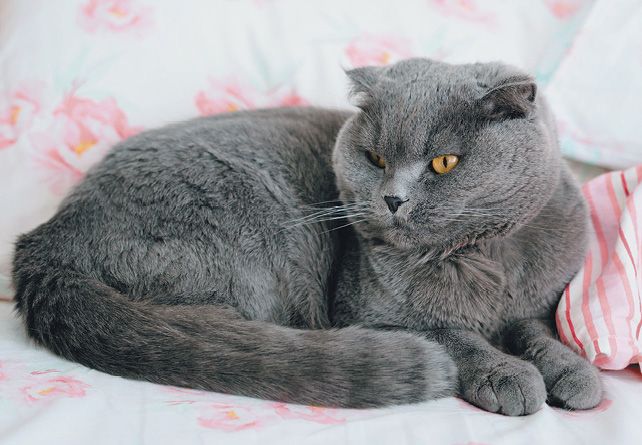To sleep, perchance to pounce
Q: This is my first cat, and he seems to sleep so much of the time. Is that normal?
Annette Slepian
Plainville, Massachusetts
Dear Ms. Slepian,
A: Yes, it’s probably normal. Cats naturally sleep about 17 hours a day, on average — fully two thirds of their lives. But we should note that much of a cat’s slumber is different from what we think of as sleep. It’s more like a car that’s idling. Yes, it’s not moving, but it’s ready to be triggered into action at any moment. Triggers that might make your cat go from dozing to fully awake in an instant: prey, the smell of enticing food, or someone entering the room.
The cat is “shaped” wrong
Q: The animal shelter where I work has a beautiful young female cat diagnosed with osteochondrodysplasia, which affects her hips and leg joints. We have read up on the condition and can find nothing about treating the problem other than administering analgesics. Is there a surgery or some other treatment so that she is not relegated to a life of pain? Thank you.
Catherine Bieber
Arlington Heights, Illinois
Dear Ms. Bieber,
A: Unfortunately, there is almost always no treatment for osteochondrodysplasia — a genetic bone and joint disease — other than pain relief that may include nonsteroidal anti-inflammatories. Sometimes known as Scottish fold osteochondrodysplasia because cats of the Scottish fold breed have the genetic mutation for the disease, it is characterized by bone and cartilage abnormalities that result in misshapen limbs and tail. (“Osteo” refers to bone while “chondro” refers to the joints, and “dysplasia” is abnormal growth of cells that can result in anatomical malformations.) The ears may bend forward, too, as a result of misshapen cartilage, and the animal may also have what is known as an undershot jaw — the lower jaw juts out more than the upper. These attributes can look cute but are not normal.
Some cats have it worse than others. While in certain cats the disease manifests itself as a shortened, inflexible tail and short legs that do not cause much discomfort, in others, osteochondrodysplasia results in lameness, swollen wrist and ankle joints, abnormal gait, and pain intense enough to make it hard simply to move and jump. In extremely severe cases, a cat is completely unable to walk. There are situations in which the most humane thing a cat lover can do is put down a cat suffering with the condition. Certainly, no cat with osteochondrodysplasia should be bred.
We hope the cat in your care doesn’t have it too bad and can be kept comfortable with medications.




